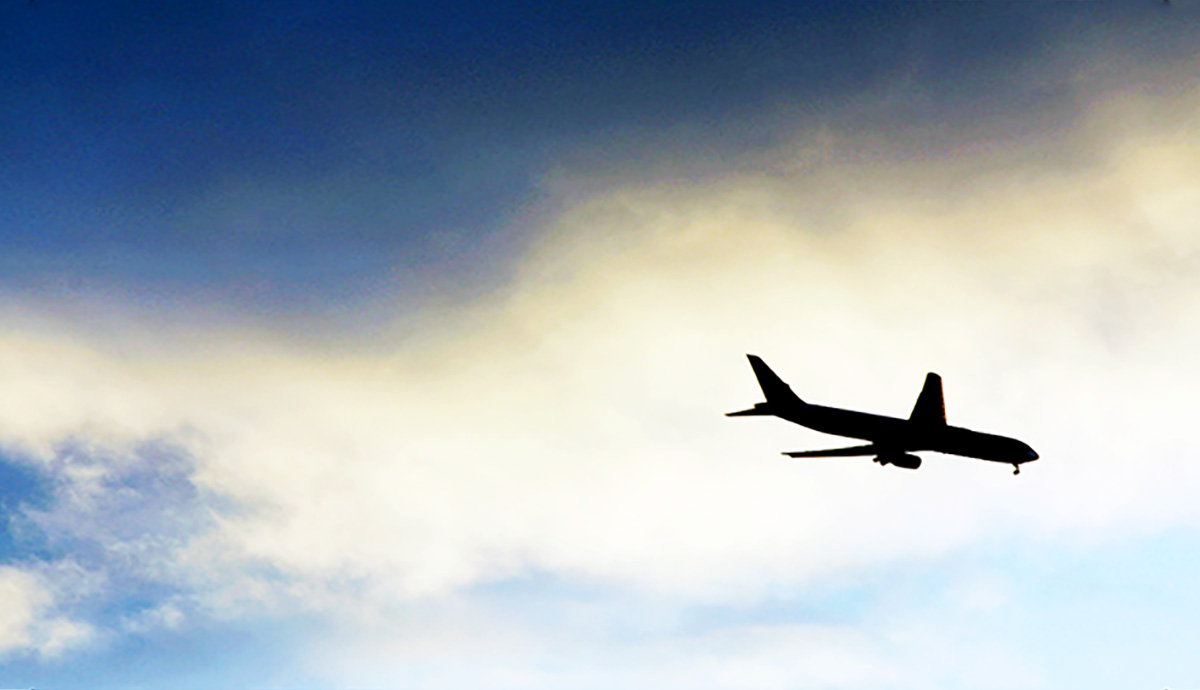What Would You Call It?
Dead stick landing: a forced landing of an airplane when it loses all power. Commonly referred to as a crash landing.
In the early days of aviation, the New York Times rarely used the word “crash” when describing the Wright Brothers’ attempts at a motor-powered flyer. The Times preferred words like “wreck” and “fall,” including the “fall of his aeroplane,” as if Orville and Wilbur were children with a hobby.
In my twenties, I began to dream about 737s swan diving over the Great Plains. 757s tilting backward like spaceships, nose up to the sky. 747s plunging like those anvils onto Wile E. Coyote.
Six months after their inaugural flight in Kitty Hawk, North Carolina, the Wright Brothers conducted another trial run in Dayton, Ohio. The Wright Flying Machine, as it was dubbed by the media, flew for thirty feet at an altitude of just twelve feet. Then, it dropped. According to a New York Times blurb, the brothers attributed the crash to “a derangement of the gasoline engine that furnishes the power.” The plane’s propellers were damaged beyond repair. The New York Times declared the incident “a wreck.” The brothers considered it a success.
I have a very unhealthy obsession with plane crashes. I can tell you, without Googling, why Alaska Airlines Flight 261 nosedived, completely inverted, into the Pacific Ocean en route to Seattle. Why Air France Flight 447 plunged into the Atlantic Ocean four hours into its return flight to Paris from Rio de Janeiro. Why TWA Flight 800 disintegrated over the Atlantic Ocean, just off the Long Island coast, twelve minutes into the flight. How a 27-year-old German pilot locked his captain out of the cockpit during a silent controlled descent into the French Alps (but with that one, I can’t tell you why).
At the height of my fear of flying, my brother would remind me: “Planes want to stay in the air. They don’t just drop.”
A jetliner that loses power at 35,000 feet can glide for one hundred miles. A famous example is the 1983 Gimli Glider, an Air Canada Boeing 767 that ran out of fuel halfway between its flight from Montreal to Edmonton. The plane glided ninty-three miles before landing on an auto racing track at a former Manitoba air station.
The Wright Brothers trained on fixed-wing gliders for three years. They’d tether the gliders to ropes and fly them like kites, the brothers stretched flat on the glider’s body. They modeled the gliders after birds, who the brothers likened to “animated sailing machines.” It took three glider models to get it right. The brothers soon hypothesized that reliable control was key to successful flight.
Glider planes do not have engines. They are lithe and serene. They are the closest to birds, but to me, they move like fish.
My brother took up glider flying after his anti-anxiety medicine forced him out the cockpit of motor-powered aircraft, according to FAA regulations. Sitting on the hood of his car, I watched the towplane pull my brother above the treetops and let go. My brother would circle and circle before leveling off. I liked to watch this though I could never figure out the point, how you could steer something with no power.
"Until people get used to flying, perhaps, they will not know the vagaries of air currents,” Wilbur Wright told the New York Times in June 1907, while in Paris to negotiate a deal with the French government. He would not answer questions about the Wright Flyer directly, but he alluded to its mechanics, comparing flying to a soaring hawk that must flap its wings to remain in sync with the air currents.
There is a difference between lighter-than-air and heavier-than-air aircraft. The Wright Brothers were innovators of the latter, the godfathers of the fixed-wing, controlled-powered planes we fly now and will continue to fly. But before heavier-than-air powered aircraft commercialized flying, there were airships, those bulbous things developed during the 1800s. Sometimes, I think they look like beluga whales, or bloated submarines.
On May 6, 1937, the Hindenberg airship, nearing the end of its transatlantic flight from Frankfurt to Newark, caught fire while attempting to dock, killing thirty-six people. The crash occurred at the airship’s stopover at Naval Air Station Lakehurst, now called Lakehurst Maxfield Field, the naval sect of what is now known as the military conglomerate Joint Base McGuire–Dix–Lakehurst, the site where my brother completed his first solo flight in a heavier-than-air, motor-powered aircraft in 2001.
I watched my brother solo from the grassy area just off the runway strip, watch him retract the landing gear, climb, pitch to the right, circle, descend, land, one wheel, two wheels, three wheels.
His instructors and fellow pilots applauded. They said he had a talent for smooth, controlled landings. My brother received his pilot’s license eight months before his driver’s license.
Wilbur Wright once said of balloons: “It is another thing entirely different from flying, which affects one with intoxication.”
My brother began flying skydiving planes after he weaned himself off his anti-anxiety medications, determined to complete enough hours so he could become a commercial pilot. He received $12 per flight. He hoped for a busy day, but it was never about the money.
On September 17, 1908, Orville Wright flew an exhibition with co-pilot Lt. Thomas E. Selfridge for in Fort Meyer, Virginia. The brothers wanted to prove to the US Army that their flyer could hold more than just the pilot and stay in the air for one hour. Earlier that spring, Orville had told The New York Times that the brothers had solved what the Times called “the aerial navigation question.” But a cracked propeller sent the flyer into a nosedive from nearly two hundred feet. Selfridge died on impact; Orville badly fractured his leg. The New York Times reported that Orville may have to be “carried to the polls” to vote in the upcoming presidential election.
On July 12, 2015, my brother would tell you that successful dead stick landings are the rule, not the exception.
The most famous dead stick landing is the Miracle on the Hudson, the remarkable ditching of an Airbus A320 on the Hudson River. On January 15, 2009, U.S. Airways Flight 1549 collided with a flock of geese on takeoff from LaGuardia Airport in Queens. Passengers reported seeing a brief burst of flames from the engines. Captain Chesley B. “Sully” Sullenberger radioed air traffic control: “[H]it birds. We’ve lost thrust on both engines.” The Airbus, flying at 3,200 feet, was transformed into an 140,000-pound glider.
Before one flight, I call my brother from a sports bar inside Dulles and tell him I’m most afraid of takeoffs. “Huh, that’s interesting,” he says. “Takeoffs are way easier than landings.”
Five minutes after my brother took off from Eagle’s Nest Airport, just miles from the Jersey Shore, his Cessna 205’s single propeller came to a full stop. It was 10:30 a.m. “What do you want to do?” My brother asked the two skydiving instructors who sat on the floor beside him. They’d taken up two passengers, both new to skydiving. There were parachutes for the instructors and students, but at four thousand feet, the plane was still too low for jumping.
Sully at first told ATC, “We’re turning back towards LaGuardia” but quickly changed his mind. He confirmed to ATC that he would try for Teterboro Airport in New Jersey.
In his written statement to the FAA, submitted on July 12, 2015, my brother reported that he “heard [a] bang” when the Cessna 205 reached four thousand feet. He’d just flown the Cessna earlier that morning, and everything operated normally. He added in his statement that he hoped the Cessna 205 would have “enough power to limp home.”
Planes can’t stop in mid-air; if they do, it’s a stall, and it’s catastrophic.
The skydivers decided to ride it out.
I am more afraid of plane crashes that are the result of catastrophic mechanical failures or unforeseeable meteorological circumstances or a mixture of those two than any act of air terrorism, like the Malaysia Airlines flight shot down with a Russian missile over Ukraine, the Pan Am-Lockerbie bombing, or the four hijacked planes on 9/11. When thinking about the latter, I am most afraid of the flight we tend to associate with bravery: United Flight 93.
With LaGuardia Airport checked off, Sully still had a few options: Teterboro, Newark, the Hudson. Seconds after he told ATC he would try for Teterboro, Sully cleared the George Washington Bridge at about nine hundred feet and had a clear path toward the river.
The NTSB conducted their own simulations of Sully’s dead stick landing at the Airbus facility in France. All four simulations were successful in returning to LaGuardia. Yet the NTSB admitted they couldn’t account for real-world factors.
With Eagle’s Nest crossed off, my brother had two options: the beach or the highway. A Sunday morning at the Jersey Shore in July explains itself. In his statement to the FAA, my brother wrote: “Best option to land out of few options was Route 72.”
Sully described to the press a “sickening, stomach-dropping feeling” when he realized he had full engine loss, no runway, and one hundred and fifty-five souls onboard. My brother still can’t tell me what he felt when he saw the motionless propeller, a beach blanketed with sunbathers, and a crowded four-lane highway.
“I made mayday to ACY,” my brother wrote in his statement to the FAA. He told the four passengers to brace for impact as the plane continued its controlled sink. Planes can’t stop in mid-air; if they do, it’s a stall, and it’s catastrophic. My brother lined the plane up with the two westbound lanes of Route 72 and waited for a break in traffic.
There’s no consensus on the first plane landing on a US highway, but the first notable incident involving a jetliner and a highway is not a pleasant one. In 1977, Southern Airways Flight 242 attempted an emergency unpowered landing on a rural highway near New Hope, Georgia, an unassuming small town outside Atlanta. The initial impact with the highway may have been successful, but once on the ground, the plane rolled into a gas station and several other businesses. The landing killed more than 70 people; of the crew, all but two flight attendants perished. The DC-9 reportedly lost power in both its engines, therefore losing its ability to thrust.
My brother often tells me landings are more difficult because of the lack of power. I strain to hear it now while flying, the sounds of the descent, the groan the engines make when they decelerate and the final rev before the landing. I do not think: What if I hear nothing?
My brother glided the Cessna under power lines, cleared a highway overpass. He spotted a break in the steady stream of sedans and SUVs. Sully’s Airbus A320 traveled 150 miles-per-hour when it made impact with the Hudson. The Cessna 205 descended toward the highway at nearly one hundred miles-per-hour.
A comment on Jalopnik’s Flight Club reads: This seems incredibly irresponsible and dangerous, putting a lot of people on the ground at risk.
My brother touched down in the westbound left lane but steered the Cessna onto the grass median to avoid rear-ending vehicles. This slightly bumpy rollout took out several road signs, including: “Keep Off Median.” The Cessna came to a rest across the street from a Home Depot, where it was later towed.
The National Transportation Safety Board determined the probable cause(s) of this accident #ERA15LA263: The total loss of engine power due to the failure of the crankshaft, which resulted from a mechanic’s failure to properly torque the engine cylinder through bolts.
There were, reportedly, just five witnesses to the Wright brothers’ first flight at Kitty Hawk in 1903. After making four flights across the white sand beaches, the brothers walked into town to the National Weather Service office, where they sent a telegram to their father in Ohio. They advised their father to contact the press. The press later called the brothers “reticent and intensely absorbed recluses.”
Type “Could Sully … ” into the Google search bar and you’ll get: Could Sully make it back to the airport; Could Sully have made it to the airport; Could Sully have returned to LaGuardia; Could Sully have made it back to LaGuardia Airport.
My brother tells CNN’s Jeanne Moos: “I wouldn’t call it a miracle.” The network uses the graphic, “Miracle on Route 72,” anyway.
Recommended
Schizophrenic Sedona
Recense (realized)
Notes on Hands






